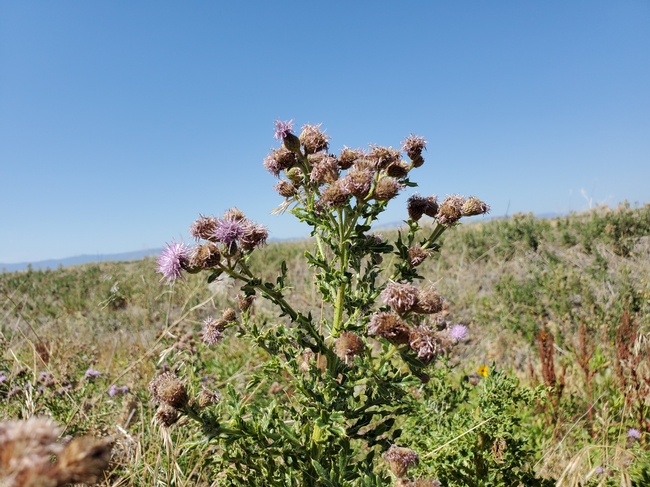
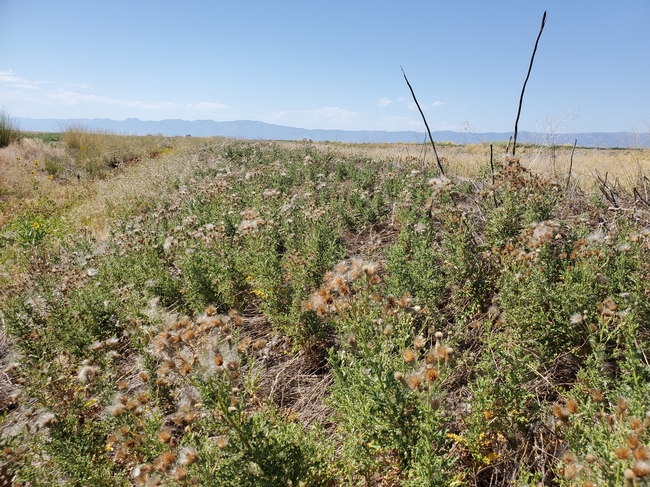
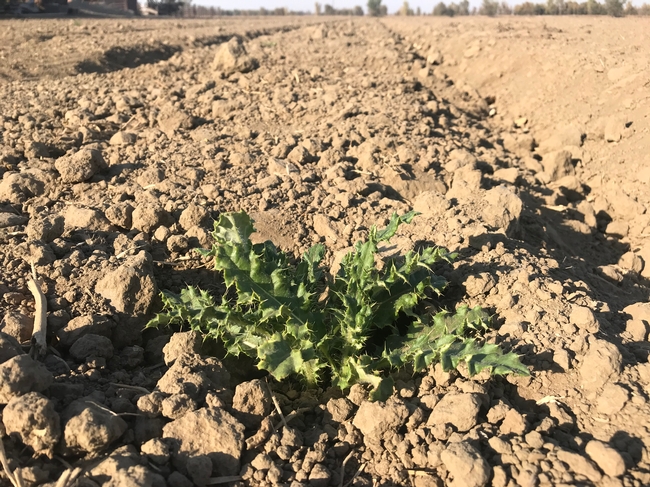
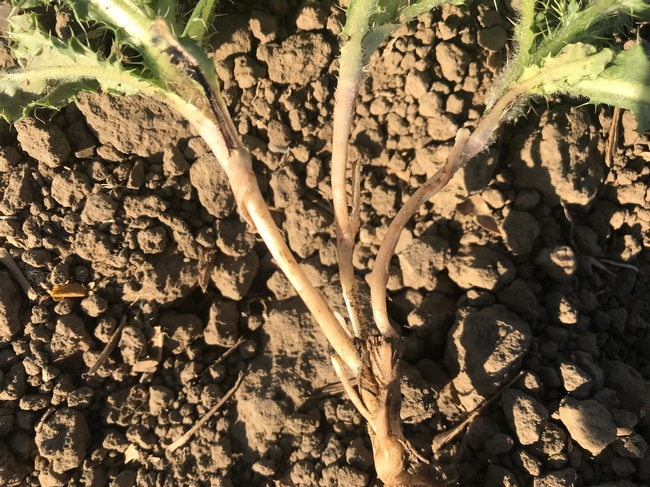
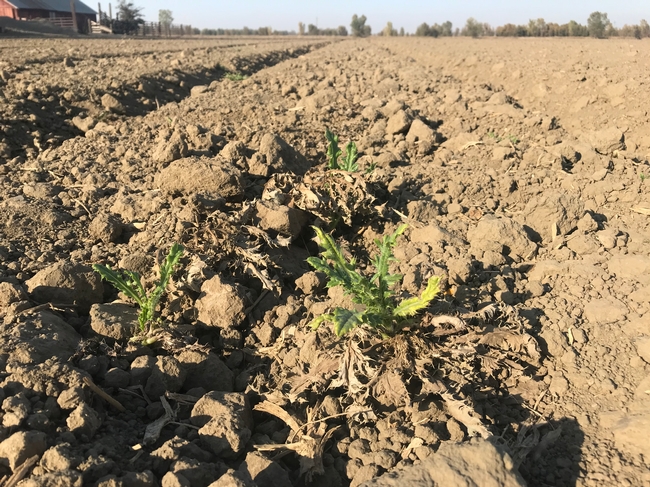
Canada thistle is one really tough weed!
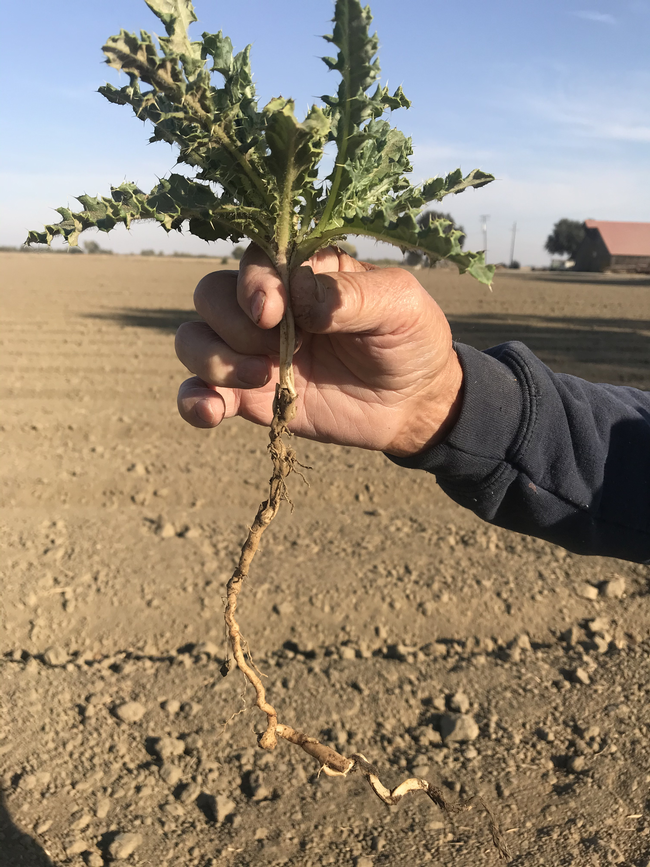
In rangelands research has shown that Canada thistle control can be achieved with applications of Milestone (aminopyralid); Stinger/Transline (clopyralid) can offer suppression. However, both of these herbicides have a very long residual activity restricting what can be planted into a treated area after application. There are few options for controlling Canada thistle in row crop ground. One can rogue it, but one has to be sure to pull up the entire root or it will regrow. One can also spray with glyphosate in the fall when Canada thistle is translocating carbohydrates down to the roots. A spring application when Canada thistle is actively growing in the bud stage is the next best time to hit it with glyphosate, but that is not possible if a crop is planted. Multiple years of treatment with glyphosate are often needed to eradicate a thick patch once established.
Canada thistle also needs to be actively growing at time of application for good herbicide translocation. Dust on the leaves can also affect the application (watch for all that ash that was deposited on plants this year from the fires). If one is making a spot treatment be sure that the glyphosate concentration in the backpack sprayer isn't too high or you'll likely get burn back but less translocation down to the root and less control. A slow death is generally desired for those deep-rooted noxious weeds (and perhaps more satisfying!)
Keep this weed out of your fields!
Canada thistle is a prohibited weed in certified seed production, so check your fields regularly and keep it out. Don't let it get established! The California Crop Improvement Association (CCIA) charged with certifying seed fields states the following: “We have a zero tolerance for prohibited weeds in any class of certified fields. If the grower does not remove the plants from the field, then that field is automatically rejected, no matter the stage of said plant.”
Other troublesome thistle species commonly found in the Sacramento Valley include Italian thistle (Carduus pycnocephalus) and slenderflower thistle (Carduus tenuiflorus); see the UC IPM resources below. Both Italian and slenderflower thistles are annual, or sometimes biennial species, different than Canada thistle which is a perennial. Additionally, we created Table 1 comparing key common traits to help with identification of these three thistle species. Both Italian and slenderflower thistles are classified as restricted weeds. CCIA states, “For restricted weeds there can be a number of those plants in the field. However, if any of the restricted weed seeds are found in the seed analysis then the lot is rejected.”
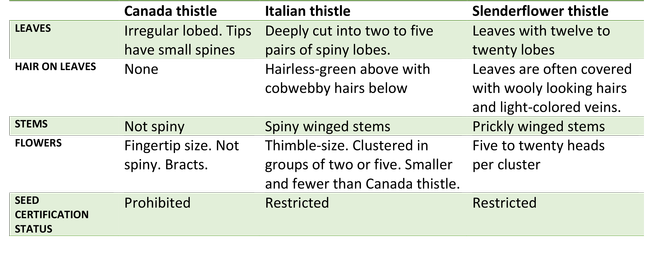
Push the panic button if you see these spiny pink flowering plants in and around fields and get rid of them, removing the whole plants from the field. Remind everyone to watch for thistles in your fields. We're not sure where the Canada thistle weed came from here in the Sacramento Valley; perhaps on flood waters in 2017, or maybe from a seed crop that was planted the in 2019. CCIA will also be watching for Canada thistle during field inspections.
Online sources for the table:
- https://ipcm.wisc.edu/blog/2015/05/which-thistle-is-in-my-pasture-and-how-to-control-it/
- https://www.cal-ipc.org/resources/library/publications/ipcw/report24/
- http://piercecountyweedboard.org/index.php/slenderflower-thistle
For more information on thistle identification and photos, see the UC IPM resources:
Author - Agronomy and Weed Management Advisor- Merced, San Joaquin and Stanislaus Counties.